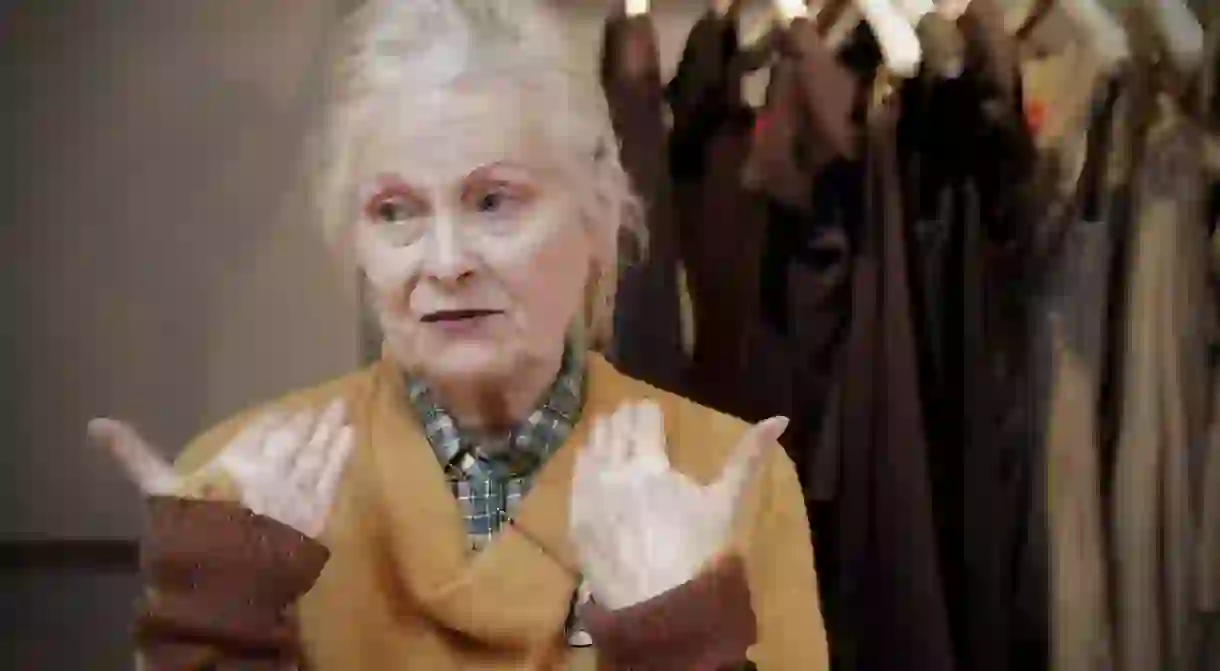Why You Should Watch 'Westwood: Punk, Icon, Activist'

Launching in cinemas on March 23rd and designed to give an insight into the life and mind of one of London’s most esteemed fashion designers of our generation, Westwood: Punk, Icon, Activist is one to add to your weekend bucket list. Expect behind the scenes footage, quotes from Westwood’s family, Kate Moss and Bella Freud, plus that fateful Naomi Campbell fall, all condensed into 80 minutes of viewing.

First impressions of Dame Vivienne Westwood aren’t that of a particularly cooperative interviewee – the opening scene of Westwood: Punk, Icon, Activist features her being overtly reluctant to talk to the camera, stating that what she has been asked to discuss is ‘boring’ and asking ‘do we have to talk about that?’ But it’s exactly this vivaciousness that adds to her charm. The original punk and the name behind the iconic wardrobes of The Sex Pistols, Westwood started making clothes at the age of 11 as a result of her keen desire to learn; about people, about society and about the ways of the world. In 1971 her first store on the King’s Road was born. At the time, Let It Rock was a way of confronting society, stocking the kinds of statement clothing that simply wouldn’t be allowed on the shop floor today; one particular top with a swastika emblazoned across the front and printed with some questionably-moral Sex Pistols lyrics, springs to mind. ‘Every time I design something, it’s got to have a story’, she says.
And her story is what Lorna Tucker’s feature documentary captures so well. Delving far back into the archives and celebrating the ups and downs of Westwood’s career to date, this is a presentation of a truly unique individual – one that still, at the age of 76, cycles the streets of London on a bicycle to visit her namesake stores. It’s clear from the footage that she’s at home in her studio, working alongside her third and current husband, Andreas Kronthaler, who (surprisingly) seems to do most of the designing himself. But perhaps this makes sense, since Westwood’s role appears more as a reference point: he applies his ideas to dresses on models and she approves or disapproves the changes… because who better to do so than the woman who has lived and breathed the label since day one?

Her home is like something out of a Tim Walker set, her studio a seemingly chaotic but inspirational, brightly-lit space and her own wardrobe an eclectic mix of prints, textures and the label’s signature detailing which, much like the collections, has evolved dramatically over the years. Archive footage from some of the designers’ first runway shows see her somewhat awkwardly bouncing out onto the stage to meet her applause, dressed in oversized denim shirting and chinos, but fast-forward a decade or two and she’s riding the shoulders of a male model, sporting her now infamous white pixie crop, a pair of Beetlejuice-esque tights and looking significantly more comfortable with the adoration of her guests.
It’s this confidence that governs our perception of the designer now, so it’s interesting to see her somewhat coyly sitting through a 1980s Sue Lawly interview, confused as the audience laugh audibly at her collection, so much so that she (somewhat unconvincingly) threatens to ask the models to stay backstage. The same approach was taken to her acceptance of the Designer of the Year Award in 1990. It’s footage like this, along with the 1980s runway presentations, that act as a reminder of what fashion once was. No social media, no celebrity front row, just aspirational young women having fun in clothes that made them feel good about themselves. Amongst them, some of Britain’s most coveted household names; Kate Moss and Naomi Campbell, who both add lively anecdotes about the designer with Moss letting the audience in on a secret and Campbell claiming her memorable fall on the runway as being something that aided not only her own career but Westwood’s as well.

Snippets from interviews with both of Westwood’s sons, her doting husband and the lead curator at the V&A Museum’s recent presentation all add different dimensions to the documentary, but it’s perhaps most fascinating to watch her in action and to see her distinct lack of interest in driving the business forward for the purpose of profit. Still very much at the helm of the label and showing no sign of relinquishing any creative control, there’s a final scene where she stands in front of her team and convincingly tells them she doesn’t care about the money. Speaking to the camera, she admits that the business has grown too much, that she feels as though she’s lost some of her control and that she only wants to present designs that she feels completely happy with. Admirable? Yes; her sense of pride and her passion for her work is undeniable, but with a founder so heavily involved in every single aspect of the collection, we can’t help feeling a pang of sympathy for the team that’s worked so hard to make the business exactly what it is today. Whichever way you look at it, this iconic British fashion designer is doing something right but love her or hate her? That’s for you to decide.
Buy tickets for Westwood: Punk, Icon, Activist here.
SaveSave
SaveSave
SaveSave
SaveSave













